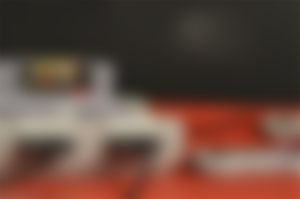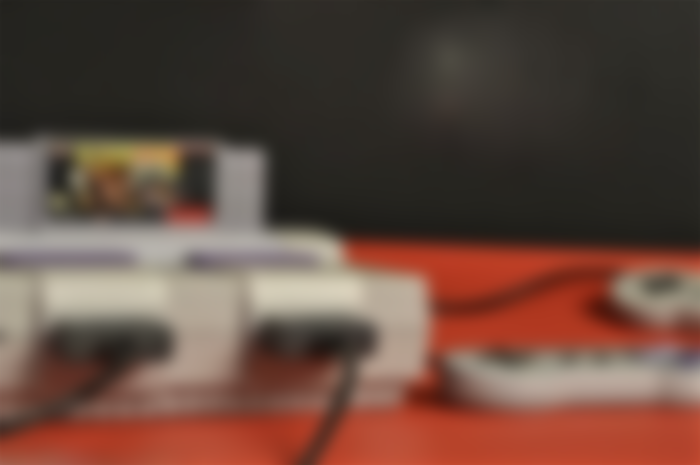#10: Super Nintendo Entertainment System (SNES) (1990)
This was the third Nintendo framework at any point delivered in North America, after the Game Boy and the NES (or the fourth, in the event that you think about the Game and Watch series — or 'The Exterminator' — an authority control center), and it immediately turned into the most mainstream 16-digit gaming arrangement of now is the ideal time.

A portion of its more remarkable games include:
Super Mario World (1990)
The Legend of Zelda: A Link to the Past (1991)
Last Fantasy V (1992)
Mythical serpent Quest V (1992)
Super Mario Kart (1992)
Star Fox (1993)
Jackass Kong Country (1994)
Tragically, this control center finishes dead last for me, since I am not partial to 2D games (how is it possible that I would be, being brought into the world in the N64 3D period?), and Donkey Kong Country was doomed close to difficult to beat (perhaps that is on the grounds that I was 7 years of age, however).
That being said, I'm certain this gaming framework holds a unique spot in the hearts of the individuals who have a nostalgic connection to it.
#9: Nintendo Entertainment System (NES) (1983)
This 8-digit console was the principal Nintendo console at any point delivered in North America (or the second, on the off chance that you check the Game and Watch series, which additionally had Mario and Donkey Kong games).
The NES was the establishment — and advancement — of numerous darling games today, for example,
The Legend of Zelda (1986)
Mario Bros (1983)
Super Mario Bros (1985)
Tetris (1984)
Jackass Kong (1981)
Metroid (1986)
Last Fantasy (1987)
This control center comes in second to last place, not on the grounds that I think it is superior to the SNES, but since it made ready for what Nintendo is today. Without it, we probably won't have Zelda, Metroid, or Final Fantasy!
(The Legend of Zelda was first delivered on the Famicon Disk System in 1986, accessible just in Japan, and was subsequently changed over into a NES cartridge to make it playable around the world).
In addition, my companion gave me a brilliant The Legend of Zelda game cartridge, it's as yet one of my most valued belongings.
#8: Game Boy Advance (2001)
This may not be the main handheld framework from Nintendo, yet it's the most seasoned one I've played.
Nintendo incredibly sold more than 81 million Game Boy Advances, likely to some extent because of its astounding game assortment, some of which include:
Mario Kart: Super Circuit (2001)
Metroid Fusion (2002)
Pokémon Ruby and Sapphire (2002)
Pokémon Emerald (2004)
The Legend of Zelda: The Minish Cap (2004)
Realm Hearts: Chain of Memories (2004)
This handheld was slick, however it simply didn't cut it for me. It stressed my eyes even with the worm light connection, and I'm not as excited about handhelds overall.
The lone games I played are Disney's Beauty and the Beast: A Board Game Adventure (Game Boy Color, 1999) and Fortress (like Tetris, 2001).
#7: Wii U (2012)
The greatest redesign the Wii U had from the Wii was the expansion of the GamePad. Numerous gamers didn't see the value in this, griping about the abnormal estimated screen distant they needed to play with rather than a customary regulator (except if they picked a Wii U Pro Controller, which were sold independently).
This new distant likewise implied there was no more movement control, making the framework a touch of minimization in such manner.
In any case, it was a slick plan to have a handheld/home control center hybrid, and it cleared the way for the Nintendo Switch.
One incredible overhaul from the Wii was the incorporation of the Nintendo eShop (first opened in 2011 for the 3DS), permitting players to purchase the advanced forms of games from home and supplanting the Wii Shop Channel.
A few games that have been delivered for the Wii U are:
Pikmin 3 (2013)
Mario Kart 8 (2014)
Hyrule Warriors (2014)
Super Mario Maker (2015)
Splatoon (2015)
Xenoblade Chronicles X (2015)
The Legend of Zelda: Breath of the Wild (2017)
I know, I know… I appraised this control center lower than the Wii despite the fact that probably the best round ever — The Legend of Zelda: Breath of the Wild — was delivered on it.
Basically, I accept the control center itself was less inventive than the Wii, and the game being referred to was significantly more reasonable for the Switch (despite the fact that I honestly played it on the Wii U).
Actually, I don't think the redesigned Wii merited the expense — nor did numerous others, as the Wii was undeniably more effective — and I just got this is on the grounds that Nintendo guaranteed BOTW would be delivered on it.
If by some stroke of good luck I would have paused; I might have saved myself a lot of cash.
#6: 3DS (2011)
This is the latest Nintendo handheld framework delivered (not considering the Nintendo Switch, which has both convenient and TV-playing capacities).
Like the name proposes, it has a Depth Slider at the edge to make 3D games show up considerably more 3D.
This, alongside its availability to the Nintendo eShop (which is presently not upheld) were its greatest updates from the previous DS family.
A few games include:
Mario Kart 7 (2011)
Creature Crossing: New Leaf (2012)
New Super Mario Bros. 2 (2012)
The Legend of Zelda: A Link Between Worlds (2013)
The Legend of Zelda: Triforce Heroes (2015)
Creature Crossing: Happy Home Designer (2015)
Pokémon Sun and Moon (2016)
The eShop include was a decent expansion, considering more established games to be brought back like The Legend of Zelda: Oracle of Seasons and Oracle of Ages (2001), which were beforehand blocked off to me.
Notwithstanding, I track down the 3D element a piece exaggerated and cerebral pain initiating, and I don't invest close to as much energy on it as I did my old fashioned DS.
What's more, they disposed of PictoChat!

#5: Wii (2006)
I actually recall when the Wii initially hit the racks. It was selling out so rapidly — being the main Nintendo framework ever that upheld movement control — that my mother needed to stand by in an immense line outside of the game store for quite a long time just to get one.
Contrasted with the clunkier GameCube, the Wii was intended to be more refined, arriving in a white tone and having a slight regulator and sideways-standing control center.
Alongside the principle movement distant, there is another regulator you can join to it called the Nunchuk (I love that word), which has on it a simple stick and two extra fastens. It has a huge exhibit of other remarkable distant connections to browse, as well, for example,
The Wii Crossbow (for Link's Crossbow Training, 2007)
The Wii Balance Board (for Wii Fit, 2007)
The Wii Wheel (for Mario Kart Wii, 2008)
Another new component for Nintendo home control center was its capacity to associate with the web utilizing Wi-Fi, taking into consideration online multiplayer play and advanced downloads through the Wii Shop Channel (the Nintendo eShop's archetype, which is at this point not upheld).
A portion of its unique games include:
Creature Crossing: City Folk (2008)
Bomberman Land (2007)
Super Mario Galaxy (2007)
Lego Harry Potter: Years 1–4 (2010)
Lego Harry Potter: Years 5–7 (2011)
The Legend of Zelda: Skyward Sword (2011)
This framework was loads of fun, permitting players to make customized Miis and use movement control; out of the blue, I could swing Link's blade myself while playing The Legend of Zelda: Twilight Princess (2006).
Albeit this Nintendo period presented a huge load of new games, relatively few of them were pivotal. They were excessively engaged — as I would like to think — on making bad quality business games, pacifying to the enthusiasts of well known media like Spongebob, Pirates of the Caribbean, and Hannah Montana.
This framework likewise delivered my most un-most loved 3D Zelda game to date: The Legend of Zelda: Skyward Sword.
That, however I unmistakably recollect checking my BMI utilizing the Wii Balance Board each day, which drove me down an elusive slant. - 5 focuses.
#4: Nintendo DS (2004)
This was an immense jump from the past handheld: the Game Boy Advance.
It highlights two screens rather than one, it can associate with Wi-Fi (however I had no clue about what Wi-Fi was at the hour of playing), a portion of the later models have implicit cameras, the screens are a lot more brilliant (thank heavens), and the actual games are in higher goal, some of which are:
Super Mario DS (2004)
Mario Kart DS (2005)
Gather Moon DS (2005)
Nintendogs (2005)
Creature Crossing: Wild World (2005)
Mind Age: Train Your Brain in Minutes a Day! (2005)
Pokémon Diamond and Pearl (2006)
Super Mario Bros. (2006)
The Legend of Zelda: Phantom Hourglass (2007)
This handheld scores higher than the 3DS for transcendently nostalgic reasons (and I don't really accept that the 3DS added a lot to the current control center); I carried my DS with me wherever I went — it was a tank — dependent on games like Nintendogs, Animal Crossing, and Super Mario Bros.
That, however the Nintendo DS, the Nintendo DS Lite (2006), the Nintendo DSi (2008), and the Nintendo DSi XL (2009) have together sold just about 155 million control center consolidated starting at 2013. That is more than twofold the deals than that of the 3DS family! It additionally makes the DS the second most mainstream arrangement ever, just after the PlayStation 2.
#3: Nintendo 64 (N64) (1996)
This was the third home framework delivered in North America, after the achievement of its archetypes: the NES and the SNES.
This control center changed the universe of gaming always; it was Nintendo's first 3D control center at any point delivered and their first regulator to have a simple stick (does any other individual held the distant with their left hand in the center left hole?). A portion of its games were:
Super Mario 64 (1996)
Mario Kart 64 (1996)
Star Fox 64 (1997)
Bomberman 64 (1997)
The Legend of Zelda: Ocarina of Time (1998)
Mario Party (1998)
Banjo-Kazooie (1998)
Jackass Kong 64 (1999)
Gather Moon 64 (1999)
The Legend of Zelda: Majora's Mask (2000)
Wonderful Dark (2000)
This control center might be a legacy, yet it holds the third-place spot in light of how persuasive it was on both the gaming business and myself.
It particularly changed the manner in which Zelda games were made, which you can peruse more about here. (Express gratitude toward God they didn't make it a first-individual game, right?!) Ultimately, this is the situation that made me begin to look all starry eyed at gaming, coming out the year I was conceived so I could be raised on 3D games, and including my two most loved rounds ever: The Legend of Zelda: Ocarina of Time and Majora's Mask.
Nothing beat getting back home from grade school and turning on the N64 with some Dunkaroos.
#2: Nintendo GameCube (2001)
This 6th era framework is profoundly misjudged as I would like to think. It's convenient — with a handle joined to the rear of the 3D shape — the illustrations are incredible contrasted with the N64, and it comes in purple!
It was likewise the principal Nintendo framework to exchange out cartridges for little plates. These circles contained phenomenal games, for example,
Super Smash Bros. Scuffle (2001)
Luigi's Mansion (2001)
Pikmin (2001)
Super Mario Sunshine (2002)
Soulcalibur II (2002)
Star Fox Adventures (2002)
The Legend Of Zelda: The Wind Waker (2002)
Metroid Prime (2002)
Gather Moon: A Wonderful Life (2003)
Stories on Symphonia (2003)
Lego Star Wars: The Video Game (2005)
The Legend of Zelda: Twilight Princess (2006)
As far as I might be concerned, this control center effectively comes in just short of the leader, as it holds a portion of my youth top picks like Super Monkey Ball (2001), Harvest Moon: A Wonderful Life (still the best game in the establishment to date), and The Wind Waker (I'm as yet in shock that this game got such a lot of disdain, however I surmise without the ruckus Twilight Princess couldn't ever have been made).
The GameCube additionally presented the fan-most loved Animal Crossing (2001) to Nintendo, despite the fact that I didn't play this series until it went to the DS.
#1: Nintendo Switch (2017)
The Switch has offered just about 85 million duplicates to date, approaching the top rated Nintendo home control center the Wii, which has sold almost 102 million duplicates.
Nintendo limitlessly further developed their promoting methodologies for the arrival of this framework contrasted with the Wii U, and numerous gamers who were sitting tight for the arrival of The Legend of Zelda: Breath of the Wild Switch variant were first to buy this since a long time ago looked for framework.
The organization took the Wii U's GamePad plan and further developed it, adding separable Joy-Cons (with movement control!) so the Nintendo Switch screen can sit in the shipping bay — far removed — while you play on the TV. In the event that you don't have a TV or on the other hand in case you're voyaging, essentially re-append the Joy-Cons to the screen, making a compact handheld gadget!
The Switch uses game cards that look like DS game cards: movable, lightweight, and ghastly tasting.
A few games include:
Super Mario Odyssey (2017)
Xenoblade Chronicles 2 (2017)
Splatoon 2 (2017)
Super Mario Party (2018)
Luigi's Mansion 3 (2019)
The Legend of Zelda: Link's Awakening (2019)
Creature Crossing: New Horizons (2020)
Nintendo has additionally collaborated with other gaming organizations, permitting the control center to help select non-Nintendo games like The Elder Scrolls V: Skyrim (2011), The Witcher 3: Wild Hunt (2015), and Kingdom Hearts: Melody of Memory (2020)!
Nintendo will struggle redoing this framework, so it's presumably setting down deep roots for some time. The designs are astonishing, the idea is splendid, and the games have been remarkable up until this point!

